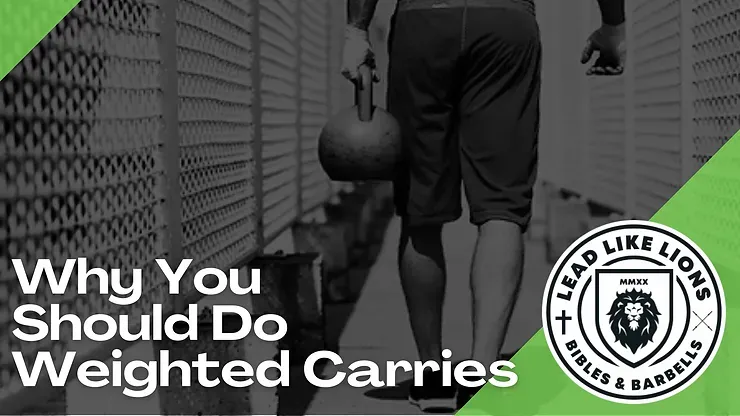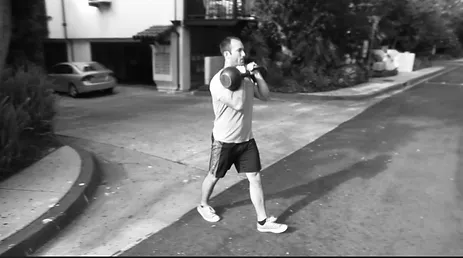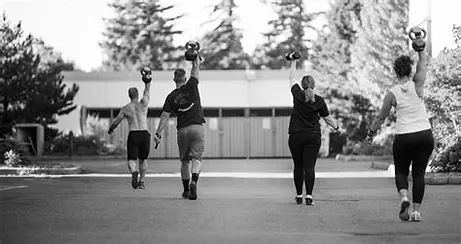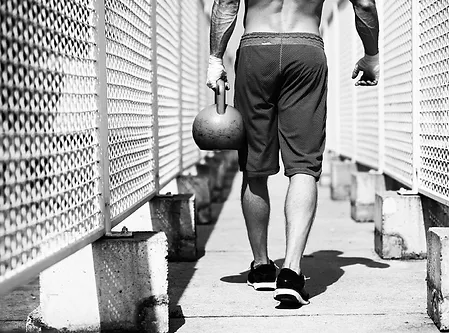
Why You Should Do Weighted Carries
Pick up something heavy. Carry it over a certain distance and set it down. It may be hard to believe, but a weighted carry is one the most underrated and most functional exercises out there.
As simple as it seems, implementing them into your training can cause serious benefits not only in the gym, but also in daily life.
Carrying the groceries, furniture, and even the kids can become a lot easier.
Benefits
Functional exercise as we carry numerous items on a daily basis
Builds a strong back with proper form
Builds core strength to stabilize the spine against the swaying of the weight with each step
Postural exercise that develops strength and endurance in postural muscles with good form
Full body exercise as every major muscle group is used, along with smaller muscles that may not get worked as often in regular training
Improves grip strength which transfers over to daily life and other exercises like the deadlift, chin-up, row, and presses
Develops powerful leg/hips
Variations
Farmers Carry

The Farmer's Carry is the most popular carry, as it is holding a weight in each hand and walking a specified distance. As you walk you want to maintain good form, staying tall, chin up, shoulders back. Your grip will most likely be the weakest link and should be burning about halfway through your walk.
Racked/Front Carry

The Racked or Front Carry loads the weight in the front of the body. The challenge is to remain vertical and tall, resisting any rounding of the upper back or extending through the lower back. This variation gives the core, spinal erectors, and lats a good workout.
Overhead Carry

The Overhead Carry challenges stability in the shoulder more than the other variations since the weight is held overhead and away from the shoulder, making it top heavy and wanting to sway with each step. A one-handed overhead carry will challenge the core laterally as you prevent yourself from leaning to either side. A two-handed overhead carry will challenge you in the sagittal plane by requiring you to tighten your abs to prevent extension in the lower back.
Keep the wrist neutral, to build wrist strength. The kettlebell should be supported by the forearm like in the above picture.
Suitcase Carry

The Suitcase Carry is a one-sided carry. This variation puts all of the weight on one side of the body, working the muscles on that side harder than the other. The one sided load challenges lateral stabilization in the core as you prevent being pulled down by weight and vise versa of not overcompensating and lateral flexing too much to the other side. Keep the shoulders level while maintaining good tall posture.
How to Add it to Your Training
Weighted Carries are great to add to an interval circuit or as a finisher at the end of your workout.
If you want to take it more seriously and train it as a lift to get better at, then the following would be a good place to start.
Dedicate three days for training
Day one: Light weight for Long distance (40-60 yards)
Day two: Medium weight for Medium distance (20-30 yards)
Day three: Heavy weight for Short distance (10-15 yards)
Shoot for 3-4 sets on each day.
How much weight?
0.75 x Bodyweight in each hand = good starting point
Bodyweight in each hand = goal
1.25 x Bodyweight in each hand = Advanced
1.5 x Bodyweight in each hand = Exceptional
Another good judgement on weight is that your grip should be screaming at the halfway mark of your walk. If not, then you should increase the weight.
All of these exercises can be used with dumbbells, barbells, sandbags, weight plates or other pieces of equipment with some adjustment according to which one you use. Just always use good judgement and safety especially when carrying overhead.
I'm positive that incorporating one or all of these variations will help you to become stronger not only in the gym but in everyday life